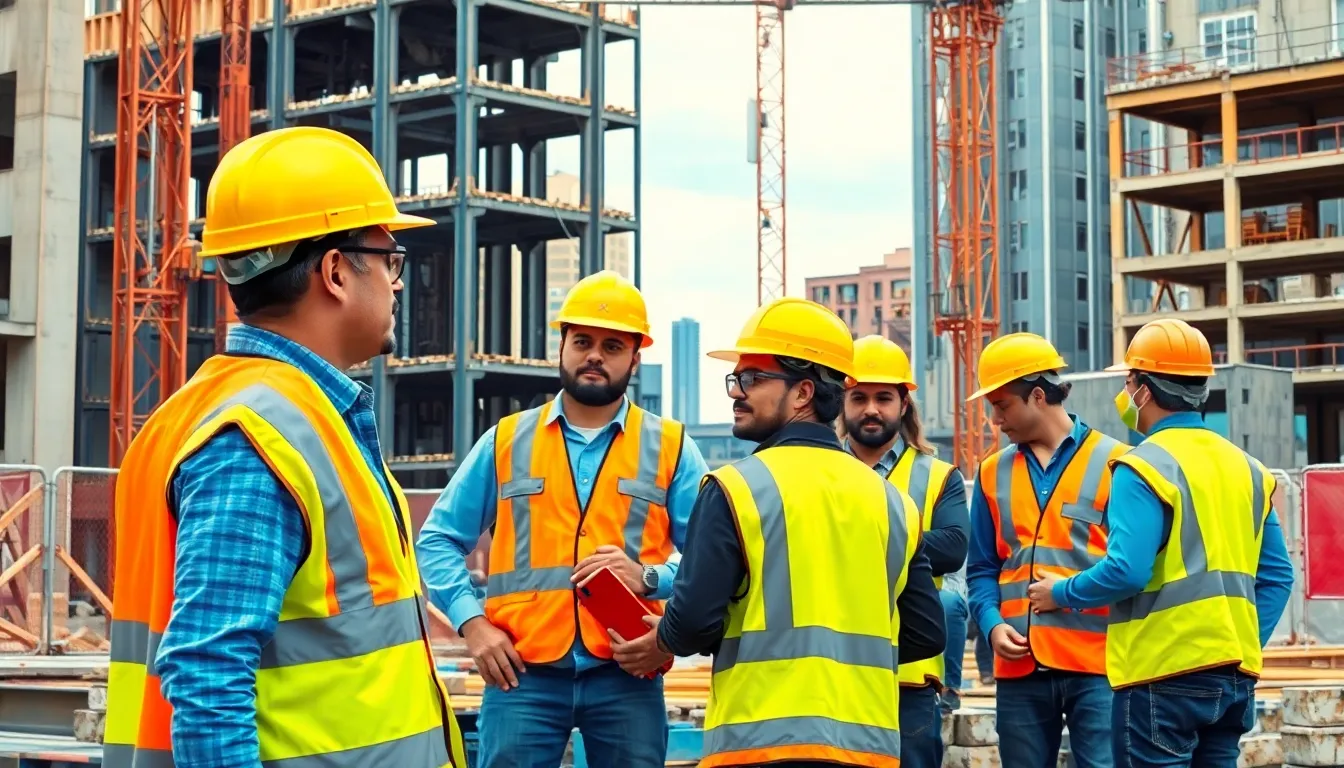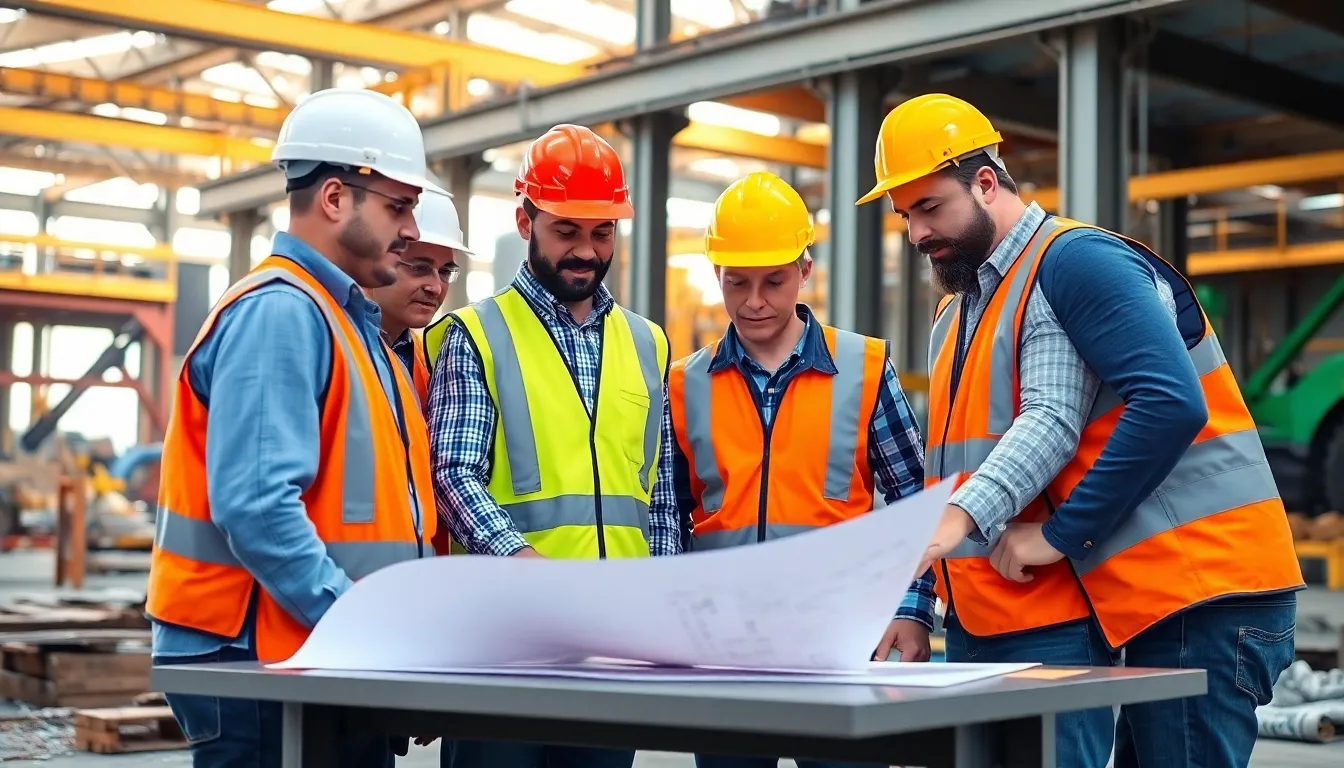Table of Contents
ToggleWhen it comes to commercial building construction, costs can feel like a game of hide and seek—always elusive and often surprising. From materials to labor, every decision can send the budget spiraling faster than a contractor at a clearance sale. Understanding these costs isn’t just smart; it’s essential for anyone looking to break ground without breaking the bank.
But fear not! Navigating the world of construction expenses doesn’t have to be as daunting as deciphering a contractor’s handwriting. With the right insights and a sprinkle of humor, anyone can grasp the ins and outs of construction costs. So buckle up as we dive into the nitty-gritty of commercial building expenses, ensuring your next project goes from blueprint to reality without a financial meltdown.
Overview of Commercial Building Construction Cost
Commercial building construction costs encompass various factors that directly affect the overall budget. Understanding the breakdown of these costs helps in planning and managing a construction project. Labor expenses represent a significant portion, often accounting for 30% to 50% of the total budget.
Materials also play a crucial role in determining costs. Quality of materials influences not only the initial investment but also long-term maintenance expenses. For instance, opting for energy-efficient materials may involve higher initial costs but leads to savings on utility bills over time.
Location impacts construction costs markedly. Urban areas typically feature higher land prices and labor rates compared to rural regions. Accessibility to suppliers and contractors can also affect prices and timelines.
Design complexity adds to total expenses. Simple designs cost less to construct compared to intricate ones with custom features. Every additional square foot in a commercial building can increase costs significantly, so careful planning is essential.
Regulatory requirements and building codes impose fees and standards that must be met. Local governments may charge for permits and inspections, affecting the overall budget. Compliance with these regulations often requires additional time and resources.
Construction duration has financial implications as well. Longer projects lead to increased labor and financing costs. Effective scheduling and project management techniques can minimize delays and associated costs.
Analyzing all these factors provides valuable insights into commercial building construction costs and enhances budget management. Tracking expenses closely helps project managers allocate funds wisely and avoid unexpected financial challenges.
Factors Influencing Construction Costs

Numerous elements significantly affect commercial building construction costs. Understanding these factors enables effective budget management and project planning.
Material Costs
Material expenses contribute largely to the overall budget. Typically, high-quality or specialized materials result in increased costs due to their availability or manufacturing processes. Energy-efficient options often incur higher initial costs but yield savings in the long run. Prices can vary based on market demand, supply chain disruptions, or economic conditions. The choice of materials also influences ongoing maintenance expenses, adding another layer of financial consideration.
Labor Costs
Labor expenses represent a substantial portion of the total construction costs, generally ranging from 30% to 50%. Skilled labor demands higher wages, leading to increased project expenses. Training requirements and safety regulations also add to labor costs. Labor availability can fluctuate based on the project’s location and the local workforce’s qualifications. Projects with intricate designs frequently require more specialized labor, amplifying these costs further.
Location and Site Conditions
Location plays a critical role in determining construction costs. Urban areas typically feature higher land prices compared to rural settings. Likewise, labor rates tend to be elevated in metropolitan regions. Site conditions directly affect construction expenses; for instance, difficult terrain increases excavation and foundation work costs. Additionally, local zoning laws and building codes may impose fees that contribute to overall project expenses.
Cost Estimation Methods
Cost estimation plays a vital role in commercial building construction, helping stakeholders understand financial requirements. Accurate estimation methods can minimize budgeting risks and manage expectations.
Detailed Estimation
Detailed estimation entails carefully analyzing project specifications to develop precise cost forecasts. This method typically requires a breakdown of materials, labor, and overhead costs based on a line-item approach. By assessing each component involved in the project, estimators provide an itemized overview that enhances transparency. Professional estimators often utilize historical data, blueprints, and industry benchmarks to inform their calculations. Identifying potential risks associated with unique project aspects becomes possible through this level of detail. When comprehensively executed, detailed estimation significantly improves budget accuracy, benefiting all parties involved.
Parametric Estimation
Parametric estimation employs statistical relationships between project variables to predict costs. This method utilizes historical data and project parameters to create cost estimates based on defined metrics. For example, cost per square foot or system installation rates might inform the estimates. Parametric models adjust based on relevant project features, ensuring prices reflect specific characteristics. Speed and efficiency distinguish this method, allowing estimators to provide quick approximations for large-scale projects. While not as nuanced as detailed estimation, parametric estimation serves as a helpful tool, especially during early project phases.
Budgeting for Commercial Construction
Budgeting for commercial construction requires a clear understanding of various financial components. Labor costs account for 30% to 50% of the total construction budget. Material selection significantly influences both initial costs and long-term maintenance. Energy-efficient materials often yield savings over time, making them a critical consideration.
Market demand and economic conditions often impact material prices. Supply chain disruptions can lead to fluctuating costs, especially for high-quality or specialized materials. Urban areas typically feature higher land prices and labor rates, adding complexity to budgeting in these locations.
Site conditions must also be assessed. Challenging terrains, for instance, increase excavation and foundation expenses. Local zoning laws and building codes may impose additional fees that affect the overall budget.
Design complexity plays a crucial role in financial planning. Simpler designs generally incur lower construction costs compared to intricate plans. Regulatory requirements can prolong construction timelines, leading to increased labor and financing expenses.
Cost estimation methods determine budgeting precision. Detailed estimation offers an itemized cost overview, enhancing transparency and accuracy. In contrast, parametric estimation provides quick approximations, using statistical relationships for faster budget assessments. While detailed methods are thorough, parametric ones effectively manage early-stage expectations.
Understanding these factors helps stakeholders navigate budgeting challenges. Clarity on labor, materials, and design can significantly streamline construction financing. Engaging with cost estimation techniques early fosters proactive management of expectations and financial risks.
Navigating the costs of commercial building construction can be challenging but understanding the key factors involved makes it manageable. By considering labor expenses material quality and site conditions stakeholders can make informed decisions that align with their budgetary goals. Utilizing effective cost estimation methods fosters transparency and helps mitigate financial risks.
Ultimately a well-planned approach to budgeting not only streamlines the construction process but also enhances the potential for project success. With the right insights and strategies in place anyone can tackle the complexities of commercial construction costs confidently.







